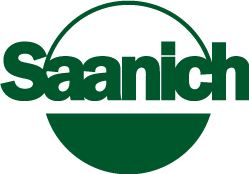From February to August 2022, the City of Victoria, District of Saanich and District of Central Saanich, with support from the Capital Regional District (CRD), undertook engagement with building industry on the upper steps of the BC Energy Step Code and Low Carbon Energy Systems (LCES) in new buildings with support from the Capital Regional District (CRD).
This regional group worked together with the Urban Development Institute (UDI) - Capital Region, the Canadian Home Builders Association (CHBA) - Vancouver Island and the Vancouver Island Construction Association (VICA) in designing and delivering the engagement process. Other local governments and electoral areas within the region have been invited to collaborate or participate in the process and information has been shared with them throughout.
The goal of the engagement and analysis was to find a regulatory pathway to achieve our climate targets while striking a balance that would provide the building and development industry sufficient notice to adjust to changing regulations and address key areas of concern.
The following outlines the process and timeline for that engagement:
Engagement Process & Timeline:
Engagement Summary
You can view the Final Engagement Report: Step Code and Carbon Pollution Standard, Charting a Path to Net Zero Emissions Buildings in the Victoria Region (July 2022) here.
Phase 3
You can view background information and proposed adoption pathways that were proposed as part of the third phase of enagement in the Phase 3 Engagement Briefing Note available here.
Phase 3 Industry Workshops and a follow up survey provided an opportunity to receive feedback on the proposed adoption pathway for Higher Steps of the BC Energy Step Code and Low Carbon Energy Systems in Greater Victoria. The results of these workshops, survey and follow-up meetings are included in the Final Engagement Report (see link above). The recordings of the Phase 3 workshops are available here:
Phase 2 – Solutions Labs
A detailed summary of the second phase of engagement was provided as part of an Interim Engagement Report available here.
The briefing notes prepared for the second phase of engagement are available here:
Phase 1
The purpose of these Industry Workshops/Initial Information Sessions that formed part of the first phase of engagement was to:
- Provide background on the BC Energy Step Code and its adoption in the capital region
- Provide an overview of Low Carbon Energy Systems and GHG emissions considerations for new buildings
- Outline Provincial and local government direction and targets for higher steps of the BC Energy Step Code and GHG emissions/Low Carbon Energy System performance standards
- Present approaches taken to achieve higher steps of the Step Code and Low Carbon Energy Systems in new buildings
- Offer the opportunity for questions
- Outline the industry engagement process and timeline, ways to provide input and next steps
The presentations from the two virtual Industry Workshop/Information Sessions are available below:
- Part 3 Industry Workshop – Wednesday 2 March, 1:30pm to 3:30pm
- Part 3 Information Sessions, by Rebecca Newlove, District of Saanich and Derek Candole, City of Victoria
- CRD Step Code Acceleration: Part 3 Buildings, by Maya Chorobik, CEA
- Step Code Advancement in the CRD: Implications for Part 3 Buildings’ Design, Construction and Costs, by Andy Chong, Integral
- Carbon Performance in BC Local Government New Building Requirements, by Brendan McEwen, AES Engineering
- Energy Step Code Architectural Case Studies for Step 3, by Jason Heinrich, HDR
- Part 9 Industry Workshop – Wednesday 9 March, 1:30pm to 3:30pm
- Part 9 Information Sessions, by District of Saanich, City of Victoria and District of Central Saanich
- CRD Step Code Acceleration: Part 9 Buildings, by Maya Chorobik, CEA
- High Performance Low Carbon, by Bernhardt Contracting and Interactive Construction
- Step 4 and 5 Case Study, by Jeffery Robinson, EnerTech Solutions


